Share This Article
What food should I feed my dog?
Among the first things you’ll need to do is decide what kind of food is best for your dog. Of course, as your dog ages, their requirements will change. Maintaining your dog’s health requires careful attention to their dietary needs throughout the course of their life, which may necessitate a few dietary shifts. Your dog’s dietary needs will change depending on:
- Breed
- Exercise levels
- Weight
- Life stage
- State of health
- Neutering status
It can be difficult to choose a dog food because so many of them look the same. Your veterinarian will be able to guide you in making this important decision, as well as future decisions about whether or not to make dietary adjustments for your dog.
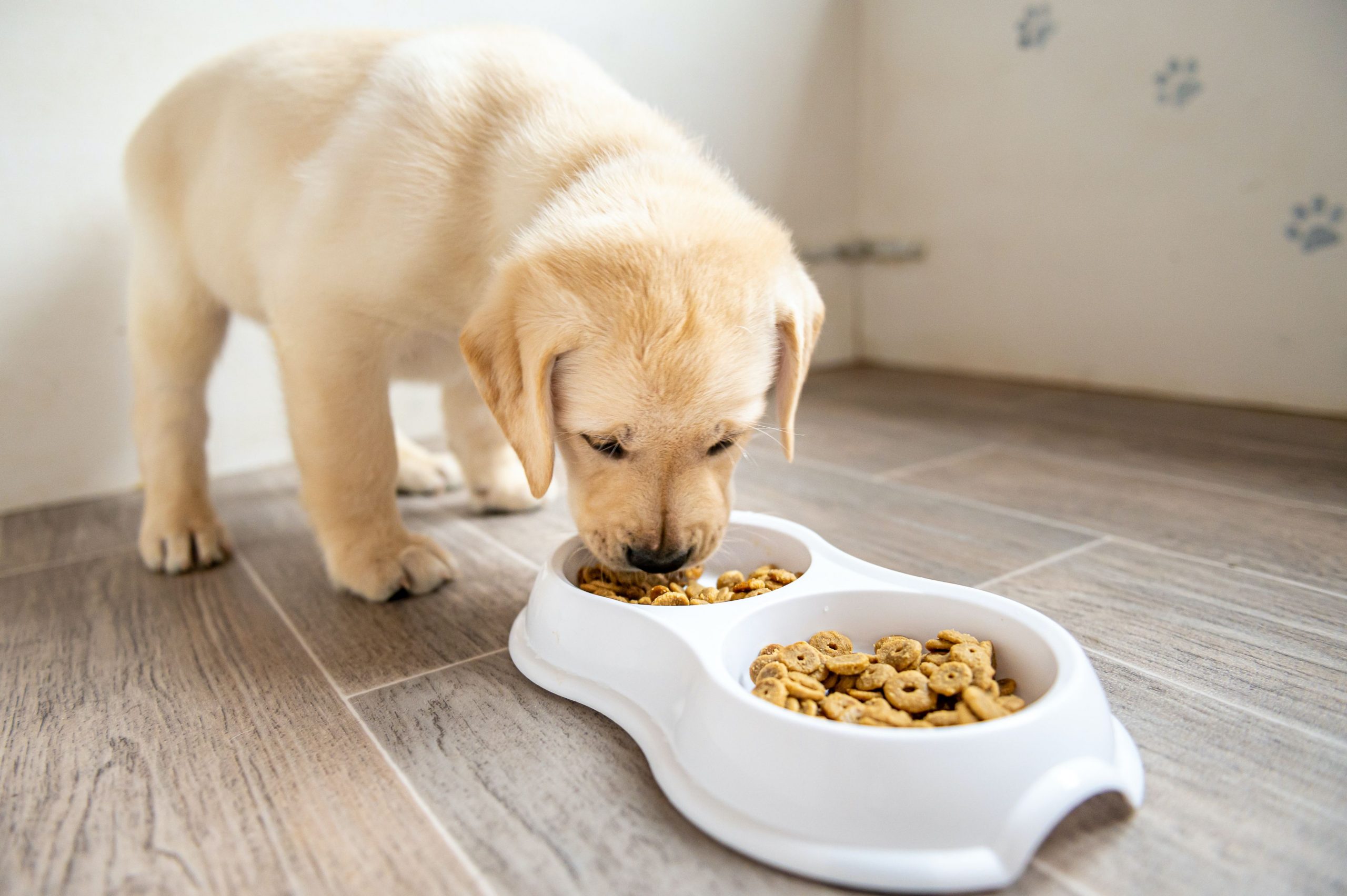
Wet or Dry food?
Once you’re familiar with your dog’s nutritional requirements, you may discover that the appropriate foods are offered in both wet and dry forms. Since they are both equally nutritious, what are the benefits and drawbacks of each form?
Pros of wet food
Water is an essential component of all “wet” foods. Animals that are reluctant to drink on their own may benefit from this type of supplemental hydration, and the mild flavor and mildly soft consistency may make it more tolerable for animals that have mouth pain or have trouble eating as a result of their physical anatomy or dental health. For sick animals, the greater aroma of wet food may be the deciding factor in whether or not they eat. Animals that need to be enticed to eat may respond better to meals with a greater odor, just as humans’ sense of smell and appetite can be affected by illness.
Cons of wet food
In addition to creating more of a mess, the heavier odors from wet foods can be a nuisance around the house. It’s packaged in smaller quantities because it doesn’t last as long as dry food. This often makes dry food a better financial choice than wet. Wet food also tends to linger in the mouth for longer than dry food, which can lead to poorer dental health in animals.
Pros of dry food
Dry food is convenient to set out for slow eaters and is less expensive than wet food. Kibble from breed-size specific foods is small or large enough for your dog’s mouth since it is clean and firmer than wet food. Dry food is better for your teeth, may be used as a reward, and keeps longer than wet food. Many dry foods only need a splash of water to become edible, so don’t let the lack of moisture deter you from trying them.
Cons of dry food
Elderly or ill animals, as well as those living in hot climates, may benefit more from wet food than dry food because of the added moisture. Some animals may not prefer dry food because of its lack of aroma. Even though dry food often has a lower percentage of animal protein, it’s more important to prioritize protein quality than quantity.
Both wet and dry foods have their advantages and disadvantages; pick the one that works best for you. Talk to your veterinarian if you need guidance. Some owners even combine the two types of food, or give their pets wet food as a special treat.
Best Wet foods for Dogs
turkey, duck & lamb natural wet dog food – variety pack
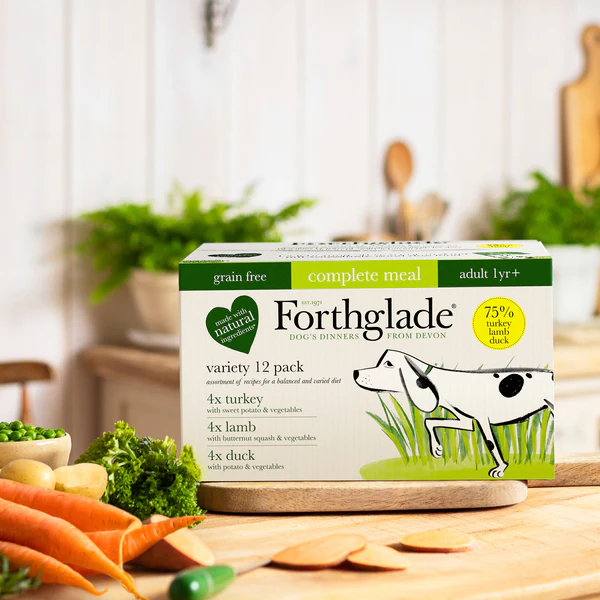
This variety pack by Forthglade is the perfect way to switch up your dog’s meal rotation with three of our most popular grain-free recipes. Our grain-free recipes are made with nutritious vegetables in place of grains, making them easy on your dog’s digestive system while still providing the balanced nutrition they need to thrive.
just chicken, lamb & beef natural wet dog food – variety pack
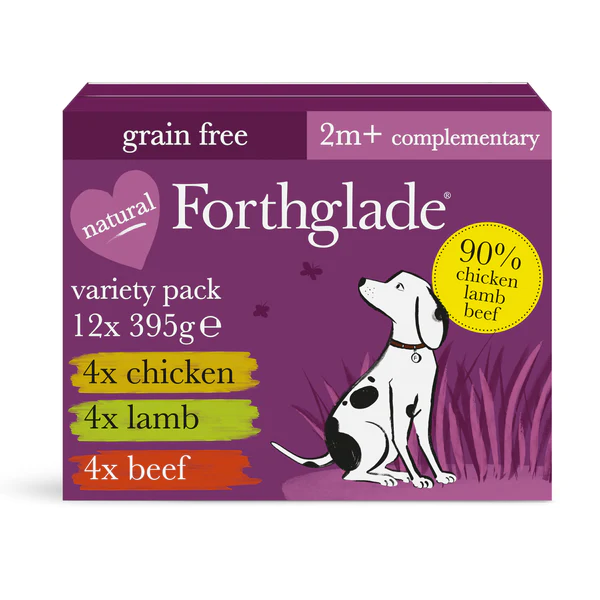
The Forthglade variety pack is a great way to spice up your dog’s diet. Each tail-waggingly scrumptious tray includes three of their most requested dishes and is made with 90% chicken, duck, or lamb, plus natural minerals and just enough water to gently steam the meat. A straightforward, truthful, and protein-rich sidekick for when you’re cooking for your canine pal.
salmon & sardines natural wet dog food – variety pack
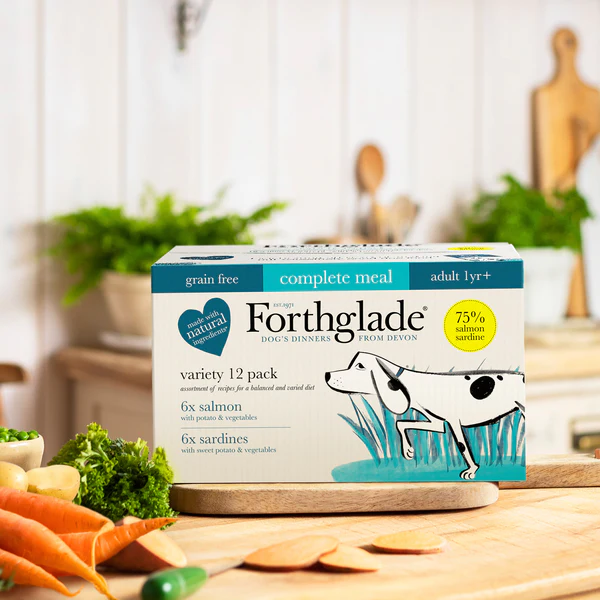
Best Dry food for Dogs
turkey natural dry cold pressed grain free dog food
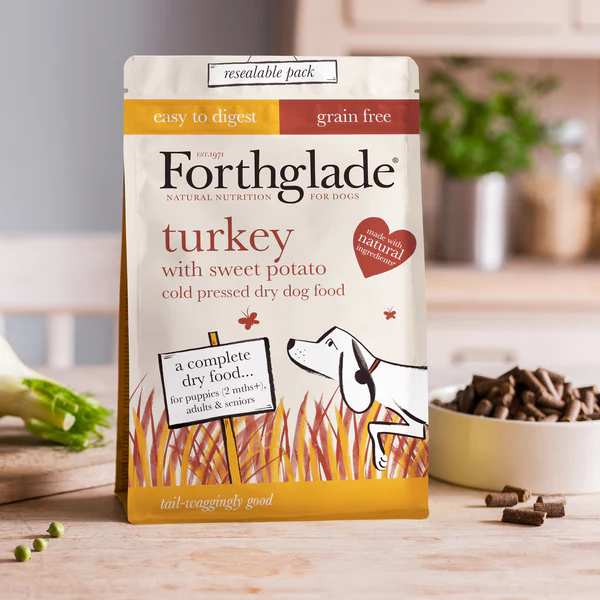
For your canine or feline companion, go no farther than this all-natural, cold-pressed dry food filled to the gills with flavor and nutrition.
This cold-pressed dog food is particularly formulated to provide your dog with a nutritious, high-quality, and tasty dry dog meal. The turkey dry dog food is made with all-natural components to ensure your dog’s optimal health and nutrition.
Bite-sized pellets of delectable grain-free cold-pressed dog food, suitable for all dogs aged 2+ months (young pups can soften with a little warm water). That’s why our turkey dry dog food is such a great choice for puppies and adult dogs alike.
chicken grain free cold pressed natural dry dog food
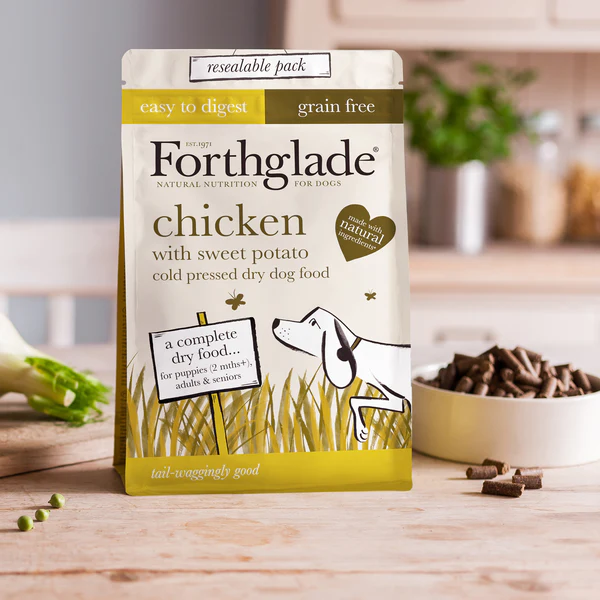
For the purpose of making this all-natural, dry dog food, Forthglade take several delectable ingredients and process them as little as possible before they make it into your dog’s bowl. Each bite-sized piece is made by gently pressing the ingredients together at a low temperature, which preserves the ingredients’ inherent aroma, flavor, and healthiness.
duck grain free cold pressed natural dry dog food
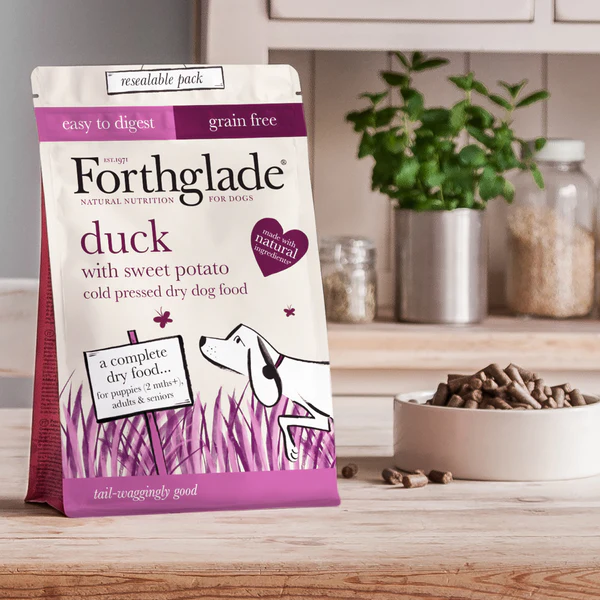
Forthglade‘s cold-pressed packaging may seem different, but the product’s flavor hasn’t changed.
For the purpose of making this all-natural, dry dog food, they take several delectable ingredients and process them as little as possible before they make it into your dog’s bowl. Each bite-sized piece retains the natural flavor, texture, and scent of the ingredients because they are pressed together at a moderate temperature.
FAQ’s
How can I change my dog diet?
When switching your dog’s diet, do so gradually to prevent any digestive upset. You should avoid making drastic changes to your dog’s eating schedule, since this may create digestive discomfort and result in your dog rejecting the new food. Switching diets should be done gradually over the course of at least a week, with only a tiny amount of the new diet replacing the old in the first bowl, and increasing amounts of the new diet throughout the course of the transition.
How many treats can I give?
Only about 10 percent of your dog’s caloric intake should come from treats and human food. Obesity has a wide range of health risks that can be exacerbated by overfeeding treats and human food. Most commercial diets are designed to be complete foods and supply everything your dog needs, thus excessive treat giving can throw off the nutrient balance of your dog’s diet.
Many dogs enjoy the crunch of carrots as a training incentive, and if you feel you cannot go without using food rewards, this is one option to consider. Also, you can measure out your dog’s daily serving of dry food and utilize a portion of it as treats throughout the day.
Do I need to change my dog’s diet when they are older?
There is no universally accepted definition of “senior dog” due to the wide variation in expected lifetime amongst dog breeds.
On the other hand, on the average, dogs are considered seniors once they reach the age of seven. However, as people age, their nutritional requirements may vary because they are more likely to experience health problems that call for more care. ‘Senior’ meals are designed to help older dogs by providing nutritional support for the organs and systems most likely to experience decline as a result of age. Therapeutic diets are a fantastic option for helping dogs with preexisting health concerns.
